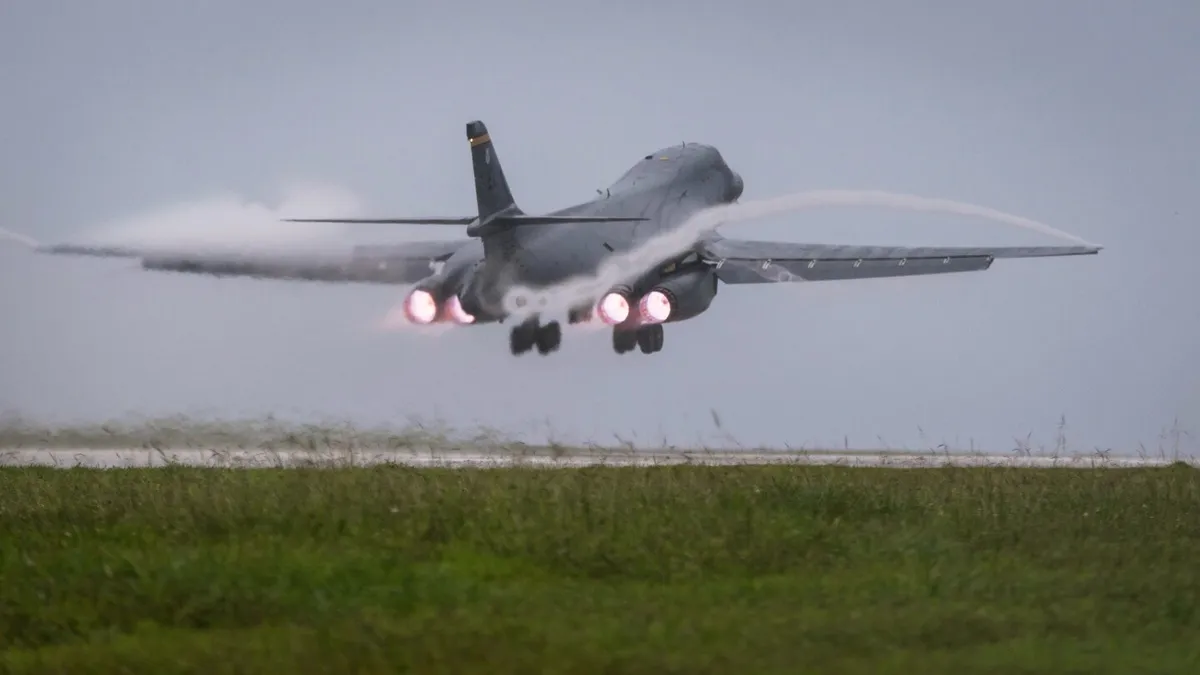
WASHINGTON (AP) — In a significant military maneuver, the U.S. military dispatched a pair of supersonic, heavy bombers to the coast of Venezuela on Thursday. This operation comes just over a week after a similar mission involving American bombers as part of a training exercise designed to simulate an attack. The U.S. military has significantly increased its presence in the Caribbean Sea and the surrounding waters off of Venezuela, leading to speculation that President Donald Trump may be considering actions to unseat Venezuelan President Nicolás Maduro.
President Maduro is currently facing charges of narcoterrorism in the United States. Adding to the tension, the U.S. military has been conducting lethal strikes on vessels in the waters off Venezuela since early September, targeting those allegedly involved in drug trafficking. This aggressive military posture has raised concerns and questions about the potential for U.S. intervention in Venezuela's political landscape.
According to flight tracking data, a pair of B-1 Lancer bombers took off from Dyess Air Force Base in Texas, flying through the Caribbean and directly up to the coast of Venezuela. A U.S. official, who requested anonymity due to the sensitive nature of military operations, confirmed that a training flight involving B-1 bombers took place in the Caribbean. Notably, the B-1 bomber is known for its capacity to carry more ordnance than any other aircraft in the U.S. military's inventory.
Last week, a similar flight featuring the slower B-52 Stratofortress bombers was conducted in the region. This time, the bombers were accompanied by Marine Corps F-35B stealth fighter jets, with a squadron currently stationed in Puerto Rico. The Pentagon labeled this operation a “bomber attack demo,” showcasing the military's capability through images shared online.
When questioned about the B-1 flight and its implications for military pressure on Venezuela, President Trump stated, “it’s false, but we’re not happy with Venezuela for a lot of reasons. Drugs being one of them.” He emphasized the U.S. military's readiness to engage in further operations, indicating that the force in the Caribbean currently includes eight warships, P-8 maritime patrol aircraft, MQ-9 Reaper drones, and an F-35 fighter squadron. Furthermore, a submarine has also been confirmed to be operating in the South American waters.
On Wednesday, Trump asserted that he possesses the “legal authority” to execute strikes on vessels suspected of drug trafficking, suggesting that similar military actions could extend to land targets. “We will hit them very hard when they come in by land,” Trump commented to reporters in the Oval Office. “We’re totally prepared to do that. And we’ll probably go back to Congress and explain exactly what we’re doing when we come to the land.”
Defense Secretary Pete Hegseth revealed on Wednesday that the military had conducted its ninth strike, resulting in the deaths of three individuals in the eastern Pacific Ocean. This followed a previous strike on Tuesday night, also in the eastern Pacific, that claimed two lives, bringing the overall death toll from these operations to at least 37. The recent series of strikes marks an escalation in the Trump administration’s campaign against drug trafficking in South America, extending operations from the Caribbean into the eastern Pacific.
Hegseth has drawn parallels between the ongoing military campaign against drug trafficking and the war on terrorism initiated after the September 11, 2001, attacks. “Our message to these foreign terrorist organizations is we will treat you like we have treated al-Qaeda,” he stated during a press briefing at the White House. “We will find you, we will map your networks, we will hunt you down, and we will kill you,” he added, reiterating the administration's commitment to combatting drug-related threats in the region.